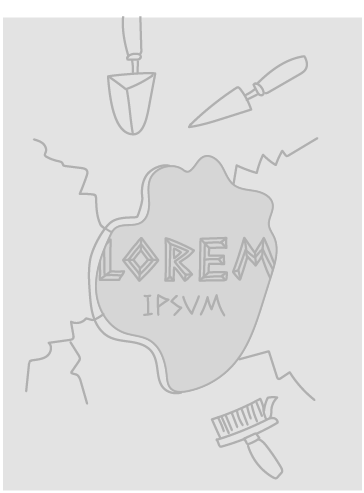Title of the work
Country of the First Edition
Country/countries of popularity
Original Language
First Edition Date
First Edition Details
Joan Holub and Suzanne Williams, Goddess Girls: Calliope the Muse. New York: Simon & Schuster Children’s Publishing Division, Aladdin Press, 2016, 244 pp.
ISBN
Genre
Alternative histories (Fiction)
Bildungsromans (Coming-of-age fiction)
Fiction
Humor
Mythological fiction
Novels
School story*
Target Audience
Children (Older children, 8–12 years)
Cover

We are still trying to obtain permission for posting the original cover.
Author of the Entry:
Ayelet Peer, Bar-Ilan University, ayelet.peer@gmail.com
Peer-reviewer of the Entry:
Lisa Maurice, Bar-Ilan University lisa.maurice@biu.ac.il
Daniel A. Nkemleke, University of Yaoundé 1, nkemlekedan@yahoo.com

Photo courtesy of Joan Holub.
Joan Holub
, b. 1956
(Author)
Joan Holub is a prolific children's author from the USA. Graduated from college in Texas with a fine arts degree. Worked as an art director at Scholastic trade books in New York. She has written and/or illustrated over 150 children's books. She has developed a range of series for teenagers on mythological themes: Goddess Girls, set in Mount Olympus Academy, Grimmtastic Tales series, set in Grimm Academy, Thunder Girls, about Norse gods set in Asgard Academy, and Heroes in Training, in which the male Greek gods, as very young men, set out on a range of adventures. For pre-school children, Jan Holub has written on a range of topics including several works with religious and historical themes. These include: This Little President; This Little Trailblazer, Hooray for St. Patrick’s Day!, and Light the Candles: A Hanukkah Lift-the-Flap Book. Joan Holub trained in fine art and worked as an art director at a graphic design company before becoming a children's illustrator and then author.
Sources:
Official website (accessed: July 2, 2018).
Profile at the penguinrandomhouse.com (accessed: July 2, 2018).
Profile at the simonandschuster.com (accessed: July 2, 2018).
Bio prepared by Sonya Nevin, University of Roehampton, sonya.nevin@roehampton.ac.uk and Allison Rosenblum, Bar-Ilan University, allie.rose89@gmail.com and Ayelet Peer, Bar-Ilan University, ayelet.peer@gmail.com
Questionnaire
1. What drew you to writing / working with Classical Antiquity and what challenges did you face in selecting, representing, or adapting particular myths or stories?
I learned to love Greek and Norse mythology in elementary school. I’m very comfortable adapting the framework of an existing myth or fairy tale by pushing it into a different setting, adding humor, and/or building in a nonfiction component. Staying true to the essential core of each myth along the way is important to me. A young Goddess Girls reader once told me she enjoyed the series because she “learned something”. In other words, while she liked being entertained, she appreciated that her familiarity and factual understanding of the original myths was broadened at the same time.
2. Why do you think classical / ancient myths, history, and literature continue to resonate with young audiences?
Kids have questions about their world. So it’s interesting to them to learn how ancient Greeks and other cultures answered questions about how their world worked in exciting tales of heroes and beasts. How did the sun cross the sky? In a chariot drawn by the god Helios. What caused night? The goddess Nyx’s starry cape covered the sky. Thrilling stories of courage and danger, such as Heracles’ twelve labors, the Trojan Horse, and the Argonauts never go out of style.
3. Do you have a background in classical education (Latin or Greek at school or classes at the University?) What sources are you using? Scholarly work? Wikipedia? Are there any books that made an impact on you in this respect?
I have an entire shelf of mythology resource books. Some of my favorite go-to sources are the Scholastic Mythlopedia series, Edith Hamilton’s Mythology, Timeless Tales of Gods and Heroes, and www.theoi.com (accessed: May 28, 2018).
4. How concerned were you with "accuracy" or "fidelity" to the original? (another way of saying that might be – that I think writers are often more "faithful" to originals in adapting its spirit rather than being tied down at the level of detail – is this something you thought about?)
Each book in the Goddess Girls series (ages 8–12, Simon and Schuster) and Heroes in Training series (ages 7–10, Simon and Schuster) is a retelling of one or two Greek myths, with a twist. We stay as true as possible to the core bones of an original myth in order to give young readers a good understanding, but we include kid situations and humor to entertain. As an example, in Goddess Girls #1: Athena the Brain, Athena is summoned to attend Mount Olympus Academy, where Zeus is the principal. MOA teachers include Mr. Cyclops, who teaches Hero-ology, a class where students are graded on their abilities to maneuver small hero figures such as Odysseus, around a gameboard to enact the Trojan War, etc. Meanwhile, Athena, who is the goddess of invention among other things, inadvertently turns mean-girl Medusa’s hair to snakes and gives her the power to turn mortals to stone by means of a shampoo-like invention called Snakeypoo at the MOA invention fair.
5. Are you planning any further forays into classical material?
Suzanne Williams and I have written a new middle grade series called Thunder Girls (accessed: May 28, 2018), which is a twist on Norse mythology featuring strong girl characters. The first book Freya and the Magic Jewel releases May 2018 for ages 8–12, published by Simon and Schuster.
Prepared by Allison Rosenblum, Bar-Ilan University, allie.rose89@gmail.com and Ayelet Peer, Bar-Ilan University, ayelet.peer@gmail.com

Courtesy of the Author from her personal website.
Suzanne Williams
, b. 1953
(Author)
Suzanne Williams is an American prolific children's author and former elementary school librarian. She has written over 60 books for children.
She grew up in Oregon and graduated with a bachelor’s degree in sociology and a master’s in library science from the University of Oregon. She currently lives in Reno, Washington.
Source:
Official website (accessed: May 29, 2018).
Bio prepared by Ayelet Peer, Bar-Ilan University, ayelet.peer@gmail.com
Questionnaire
1. What drew you to writing / working with Classical Antiquity and what challenges did you face in selecting, representing, or adapting particular myths or stories?
Writing about Greek mythology was my co-author, Joan Holub’s idea. She's loved mythology since childhood. Her enthusiasm for the subject got me excited about it too. Goddess Girls (ages 8–12) was our very first collaboration. Soon there will be 26 books in that series. One of the challenges we’ve faced in writing our (soon to be four) myth-based series for young readers is how to handle the sexual and violent content of many of the myths.
To downplay the violence, we often make it cartoonish and lighten it with humor. Since most of our gods and goddesses are pre-teens (as are our readers!), we deal with inappropriate sexual content by making changes that still allow us to keep to the spirit of the myth. For example: in introducing the Adonis myth, in which Aphrodite and Persephone fight over a beautiful youth they both desire, we decided to make Adonis a kitten, rather than a young man.
Another challenge has involved familial relationships among the various gods and goddesses. In Goddess Girls, Zeus is an adult, the principal of Mount Olympus Academy, the school attended by our “goddessgirls” and “godboys”. In mythology he would likely have fathered a good portion of the student body! So we made a decision that only Athena would call him “Dad”. (Until Hebe popped forth from a lettuce in Book 21, that is.) We do acknowledge many other family relationships. For example: Apollo and Artemis as brother and sister. Medusa and her sisters Euryale and Stheno. Persephone and her mother, Demeter.
2. Why do you think classical / ancient myths, history, and literature continue to resonate with young audiences?
Myths have got all the elements that draw us to stories: action, conflict, drama, humor, etc. What’s not to like?
3. Do you have a background in classical education (Latin or Greek at school or classes at the University?) What sources are you using? Scholarly work? Wikipedia? Are there any books that made an impact on you in this respect?
Neither Joan nor I have a classical education. I did take an online Greek and Roman mythology class a few years ago, however. (Taught by Peter Struck, University of Pennsylvania.) Terrific class!
For our Greek mythology-based series, Edith Hamilton’s Mythology is the reference we rely on the most. My co-author and I do consult Wikipedia and other online resources, especially for lists of monsters and maps and general information about ancient Greece. References for Thunder Girls, our soon-to-be-published Norse mythology-based series include: The Norse Myths by Kevin Crossley-Holland, D’Aulaires’ Book of Norse Myths, Norse Mythology: A Guide to the Gods, Heroes, Rituals, and Beliefs by John Lindow, The Poetic Edda (translated and edited by Jackson Crawford), and The Prose Edda by Snorri Sturluson (Penguin Classics).
4. Are you planning any further forays into classical material?
In addition to Goddess Girls, my co-author and I have also collaborated on a second Greek mythology-based series called Heroes in Training (ages 6–9). It’s a humorous quest/adventure series with Zeus, Poseidon, Hades and other Olympians as ten-year-olds on the run from King Cronus and the Titans. Freya and the Magic Jewel, the first book in Thunder Girls, our Norse mythology-based series, publishes May 1, 2018. I travel to Norway frequently to visit my daughter, granddaughter, and Norwegian son-in-law, so I am very excited to be doing a Norse-myth series. Aladdin (Simon & Schuster) publishes all three of Joan’s and my mythology-based series. We will be doing a fourth myth-based series with them soon – for ages 5–8. Tentative title is Little Goddess Girls, and it will be another Greek myth-based series.
Prepared by Ayelet Peer, Bar-Ilan University, ayelet.peer@gmail.com
Summary
In this installment, we meet Calliope, the muse of epic poetry. Calliope is new at MOA, and as a new student she is anxious and wishes to prove her worth. She used to live with her sisters, but now she wants to show them that she is already mature enough and perfectly able to take care of herself. “She wanted to stand on her own two feet, to have them see her as the almost-teenager she was!” (p. 27). This is of course a universal feeling shared by almost all adolescents; the need to show their maturity to their family, to emphasise their own individual existence, not as just a part of a group (in this case, the 9 muses). Calliope wishes to show that she is more than just the youngest muse in the group. However, she feels like a rebel with regard to her sisters, who, in her view, treat her like a baby. Again, this feeling resonates with many teenagers. Yet she will learn that being an adult does not mean shunning your family, but rather sharing with them and learning from them.
Calliope is also smitten with Homer; although she was (literally) his Muse. He does not see her as his love-interest, and Calliope’s love is one-sided. Accepting this bitter truth and getting over Homer would be an important step toward real maturity, as Calliope will learn.
Even though Calliope is the muse for the famous teenage author, Homer, she finds it hard to be the muse for her own homework assignment. While struggling with a classroom project, Calliope is also facing some difficulties finding a roommate and proving to her sisters that she is already a trustworthy adult. In a side-story, we are presented with the competition between Apollo and Marsyas, in which Calliope is proven to be Apollo’s muse.
Analysis
Calliope is a muse, yet while she helps and inspires others, inwardly, she feels lonley and insecure. This is highly accentuated after she helps Apollo in his competition against Marsyas. Calliope inspires Apollo to overcome his own insecurities, yet she cannot help herself. What she really wants is a friend; “a special friend with lots of time to hang out with her. There was an art to making friends, in her humble opinion.” (p. 31). While Calliope is lonely, nonetheless she approaches finding a roommate in an almost scientific-experimental way. Since she treats making friend as an art form (being a muse herself), she “interviews” prospective friends, when all she should be doing is relax and be herself. She and Amphitrite discover they have much in common and they both ease each other’s homesickness.
Calliope has all kinds of ideas for a class project; the students are tasked with the design of a special building. Yet since she has so many ideas, Calliope finds it hard to focus on just one. “Every time she tried to rein in her mind, it reacted like a wild horse, breaking free from restrains and racing away. It was like her mind had a mind of its own!” (p. 44). While it cannot be certain what the authors meant by this, they describe here a common problem which many adolescent need to deal with, namely some kind of concentration issue, when students have difficulties focusing and concentrating. The slow process Calliope goes through and the help she receives from her friends and family help her concentrate and focus her attention until finally she succeeds in creating her own idea.
In another side story, we learn that Homer stole models from Hero-ology class in order to replicate them and use them as action figures to accompany his works. It is interesting that Homer is trying to be more commercialized, as if classics are no longer powerful enough without additional shiny extras. This episode recalls Disney’s Hercules movie from 1997, in which Hercules boasts before Zeus that he is now a hero, since he gained his own action figure. This bitter-sweet comment on commercialism and hero culture is true for this book as well. Why would Homer need an additional figure to boost up his sales? Is literature really not enough anymore? Is this a subtle criticism from the authors, or just a story meant for Calliope to overcome her feelings for the lying Homer? It is up to the readers to decide.


